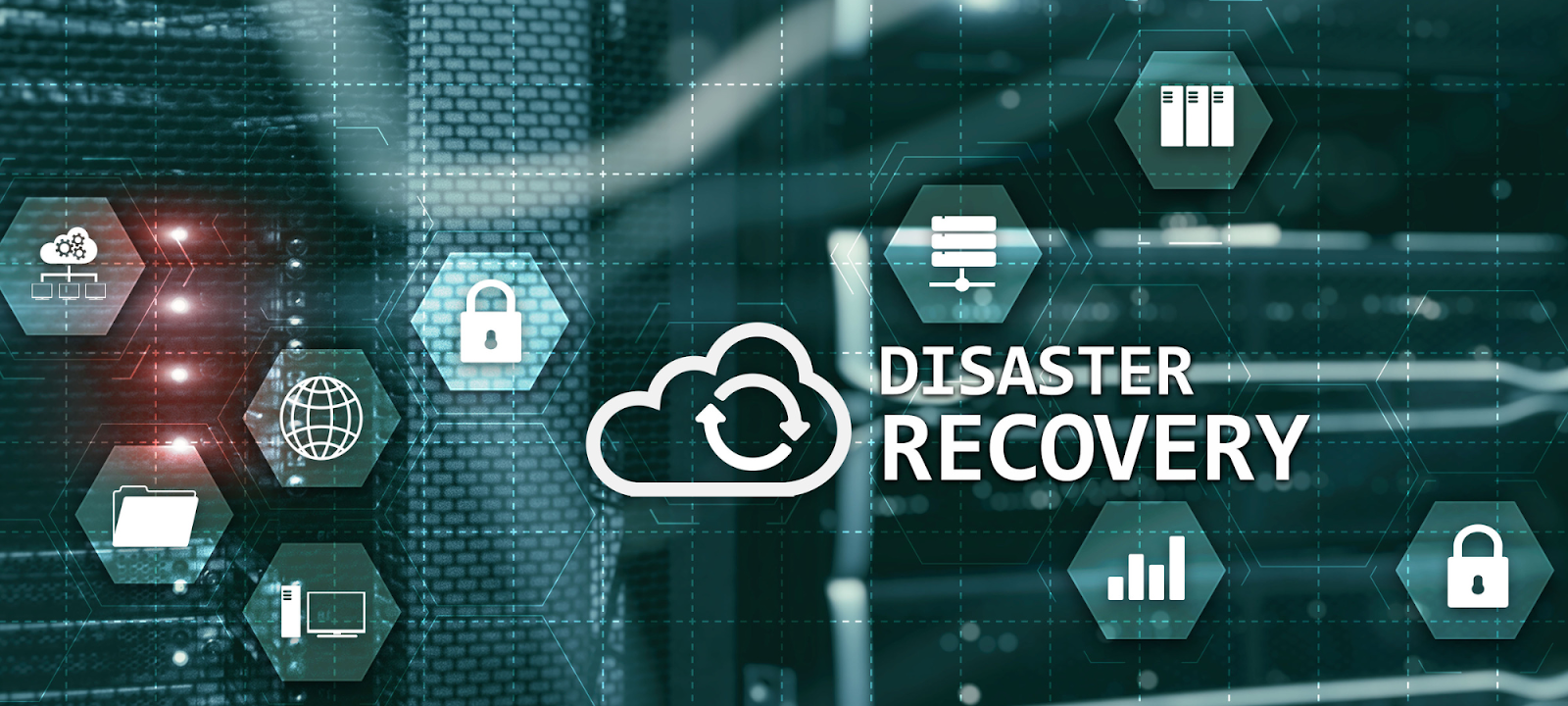
Why Disaster Recovery Matters
When disaster strikes, whether it’s a natural disaster, human error, hardware failure, or a cyberattack, businesses face one inevitable challenge: the risk of significant data loss and operational disruption.
In today’s data-driven environment, business operations depend on seamless access to critical systems and accurate data. Losing even a fraction of that information can halt business functions, damage customer trust, and result in significant financial losses.
Disaster recovery is a critical component of any data management framework.
It ensures that when data loss or corruption occurs, there is a clear, tested plan in place to restore systems quickly and resume normal operations.
A robust disaster recovery plan not only protects critical data but also supports business continuity, allowing organizations to maintain customer trust and meet compliance requirements even when unexpected events occur.
In a world where downtime translates to lost revenue and reputational harm, disaster recovery is no longer optional.
It is a strategic imperative that safeguards an organization’s data integrity, supports its critical business operations, and ensures resilience when facing other security risks or disruptive events.
Understanding Disaster Recovery in Modern Data Management
Disaster recovery (DR) is more than just a backup system—it’s a comprehensive disaster recovery strategy designed to restore critical systems, data files, and business functions after an unexpected disruption.
Unlike traditional backup solutions that simply store copies of business data, disaster recovery incorporates specific recovery processes, defined recovery point objectives (RPO), and recovery time objectives (RTO) to ensure organizations can resume normal operations quickly and efficiently.
A modern disaster recovery plan accounts for various disaster scenarios, including:
- Natural disasters such as earthquakes, floods, or hurricanes
- Human error, including accidental deletions or system misconfigurations
- Cybersecurity events like ransomware attacks and data breaches
- Hardware and power outages caused by equipment failures or network infrastructure breakdowns
These may include on-premises solutions, cloud storage, or hybrid models. On-premises data backup ensures business continuity during natural or artificial disasters by enabling organizations to maintain operations amidst unforeseen events. The primary benefit of on-premises data backup is the enhanced security, control, and customization it offers, making it a preferred choice for organizations focused on disaster recovery and data protection.
This proactive approach is vital for minimizing downtime and ensuring business continuity planning aligns with overall organizational objectives.
A strong disaster recovery plan also emphasizes data replication, secure offsite virtual machines, and cloud storage solutions to provide flexibility and resilience. The primary site is the main location where data is stored and managed, and it is important to balance proximity for quick recovery with geographical separation for disaster resilience.
High availability features in cloud services, such as redundancy and automatic failover, play a crucial role in protecting data from equipment failures and minor disruptions.
By understanding disaster recovery as a critical element of data management, businesses can protect against significant financial losses, maintain customer trust, and mitigate security risks that threaten critical data and day-to-day operations.

The Critical Components of a Disaster Recovery Plan
A robust disaster recovery plan is built on several key components that collectively ensure data protection and operational resilience when disaster strikes. Each component plays a critical role in maintaining business continuity and minimizing downtime.
Recovery Point Objective (RPO) and Recovery Time Objective (RTO)
These two metrics are the foundation of disaster recovery planning.
- RPO determines how much data loss is acceptable, measured in time between the last data backup and the moment of disruption.
- RTO defines how quickly critical systems and data must be restored to resume normal operations.
Clearly defined RPO and RTO metrics guide backup frequency, data replication strategies, and the selection of appropriate disaster recovery sites.
Data Backup and Storage Solutions
Effective disaster recovery requires reliable backup systems that protect data integrity. These may include on-premises solutions, cloud storage, or hybrid models. Backup frequency and secure data replication ensure that critical data is always available when needed.
Disaster Recovery Team
A well-trained disaster recovery team is essential for executing disaster recovery procedures. This team handles initial assessments, coordinates recovery processes, communicates with stakeholders, and ensures recovery costs are managed efficiently.
Communication Strategies
Clear communication strategies ensure that employees, partners, and customers remain informed throughout the recovery effort. Timely updates minimize confusion and help maintain customer trust.
Regular Testing and Plan Updates
An effective disaster recovery plan isn’t static. Routine testing validates recovery strategies, uncovers potential weaknesses, and ensures the plan evolves as business operations and technologies change. Ongoing testing, reviewing, and updating of the disaster recovery plan are essential for maintaining operations during an incident.
These critical elements form the backbone of an effective disaster recovery plan, ensuring businesses can respond to natural disasters, human error, data breaches, and other security risks without suffering significant financial losses or prolonged business disruption.

The Link Between Disaster Recovery and Data Protection
Disaster recovery and data protection are deeply interconnected elements of an overall business continuity strategy.
While data protection focuses on safeguarding data from corruption, breaches, or loss, disaster recovery ensures that when an incident occurs, that data and the critical systems it supports can be restored quickly and securely.
Protecting Critical Data
Modern businesses handle large volumes of critical data every day, from customer records to intellectual property.
Protecting this information is essential to prevent business disruption and maintain customer trust. A disaster recovery strategy strengthens data protection by ensuring that data backup systems, replication processes, and secure storage solutions are in place before disaster strikes.
Data Integrity and Recovery Processes
Maintaining data integrity during recovery is crucial. Recovery processes must not only restore data but also ensure it is accurate, secure, and uncompromised.
Corrupted or incomplete data can lead to operational errors and financial losses long after systems resume normal operations. A robust disaster recovery plan establishes processes to validate restored data and mitigate these risks.
Reducing Data Loss Through Redundancy
Disaster recovery procedures often include redundant data storage across multiple locations, including offsite virtual machines and cloud services. This redundancy ensures minimal downtime and limits the scope of data loss even in severe disaster scenarios.
Supporting Regulatory Compliance
Many industries have strict data protection regulations, requiring businesses to implement disaster recovery strategies that include strong backup systems, defined recovery point objectives, and clear documentation.
Effective disaster recovery procedures help meet compliance obligations while protecting critical systems.
By integrating disaster recovery into the broader data protection framework, businesses can maintain business continuity and ensure minimal disruption when faced with hardware failures, natural disasters, or other security risks.

RPO and RTO – Why They Matter
A well-designed disaster recovery plan relies on two critical metrics: Recovery Point Objective (RPO) and Recovery Time Objective (RTO). These define how much data loss is acceptable and how quickly systems must be restored after a disaster occurs.
Understanding Recovery Point Objective (RPO)
The recovery point objective (RPO) measures how far back in time data must be restored to resume normal operations.
For example, an RPO of four hours means your data backup systems must capture changes at least every four hours to avoid unacceptable data loss.
Lower RPO values typically require more frequent backup frequency or real-time data replication, often using advanced cloud storage or offsite virtual machines.
Understanding Recovery Time Objective (RTO)
The recovery time objective (RTO) defines how quickly systems and business functions must be restored after disaster strikes. An RTO of one hour means the recovery processes must resume normal operations within an hour, minimizing downtime and potential revenue loss.
Balancing RPO and RTO
Organizations must balance these objectives based on business impact analysis results, cost considerations, and risk tolerance.
A lower RPO and RTO generally improve business continuity but can increase recovery costs due to the need for high-performance backup systems, cloud services, and additional network infrastructure.
RPO, RTO, and Data Criticality
These metrics also depend on data criticality. Some business functions require near-zero data loss and rapid recovery, while others can tolerate longer delays. A robust disaster recovery plan classifies data and systems accordingly, ensuring critical business operations are prioritized when disaster scenarios occur.
Clear RPO and RTO metrics ensure your disaster recovery strategy focuses on what matters most—minimal downtime, protection of critical data, and rapid recovery when unexpected events occur.

Building a Disaster Recovery Team
A robust disaster recovery plan is only as effective as the people responsible for executing it. A well-trained and clearly defined disaster recovery team ensures that recovery processes are carried out quickly and accurately when disaster strikes.
Key Roles in a Disaster Recovery Team
- Disaster Recovery Manager: Oversees the entire recovery process and coordinates communication with business leaders, stakeholders, and service providers.
- IT Infrastructure Specialist: Focuses on restoring critical systems, servers, and network infrastructure.
- Data Protection Lead: Manages data backup systems, data replication, and secure recovery of critical data.
- Communications Officer: Ensures internal teams and external parties (including customers, vendors, and regulators) are informed during disaster scenarios.
- Business Continuity Coordinator: Aligns disaster recovery procedures with broader business continuity planning, ensuring critical business operations resume with minimal downtime.
Training and Preparedness
A disaster recovery team must undergo regular training, including simulated disaster scenarios and business impact analysis exercises. These drills help identify weaknesses in disaster recovery procedures and improve the team’s response time when an actual disaster occurs.
Access and Authority
Assigning clear responsibilities and role-based access controls ensures that only authorized personnel handle sensitive recovery processes. This protects data integrity and mitigates security risks during stressful disaster recovery efforts.
Why a Team Matters
Having a dedicated disaster recovery team transforms your disaster recovery plan from a static document into an actionable, tested framework.
This reduces recovery costs, shortens recovery time objectives (RTO), and ensures your organization can resume normal operations quickly while maintaining customer trust.

Essential Disaster Recovery Procedures
A disaster recovery plan is only effective if it includes well-defined, executable procedures that guide teams through every step of recovery when disaster strikes. These procedures ensure your organization responds efficiently, minimizes downtime, and restores critical business operations quickly.
Initial Assessment and Impact Analysis
The first step after a disaster occurs is to assess its impact on critical systems, business processes, and data storage.
Teams must determine the type and severity of the incident—whether it’s a natural disaster, hardware failure, human error, or data breaches—and establish the scope of damage using business impact analysis tools.
Communication Strategies
Clear communication is critical to maintaining customer trust and coordinating an efficient recovery.
Disaster recovery teams should immediately notify internal stakeholders, service providers, and key vendors about the incident. Predefined communication strategies reduce confusion, enabling faster decision-making and transparent updates.
Activation of Backup Systems
Restoring data backup systems is an essential step in disaster recovery procedures.
Whether using cloud storage, offsite virtual machines, or on-premises backups, the goal is to restore critical data and infrastructure quickly while maintaining data integrity. Frequent backup frequency reviews help ensure recent data is always available for rapid restoration.
Recovery Point and Recovery Time Objectives
Adhering to defined recovery point objectives (RPO) and recovery time objectives (RTO) ensures minimal disruption.
The recovery team uses these benchmarks to prioritize restoring critical business operations and data files first, then non-critical systems. Meeting these objectives is crucial to avoiding significant financial losses.
Validation and Testing of Systems
Once systems are restored, it’s essential to validate them for data corruption, performance issues, or compatibility failures. Testing ensures that recovered data files and systems are functioning as expected before normal operations resume.
Documentation and Review
Each recovery effort should conclude with a post-incident review. This identifies areas of success and other security risks that require mitigation. Documenting these lessons strengthens future disaster recovery strategies and business continuity planning.

Disaster Recovery Sites and Infrastructure Considerations
Choosing the right disaster recovery site and supporting infrastructure is a critical component of any disaster recovery plan. These sites enable organizations to maintain business continuity and restore critical systems quickly when a disaster occurs.
Types of Disaster Recovery Sites
- Hot Sites – Fully operational facilities with mirrored data backup systems, enabling minimal downtime and rapid recovery of critical business operations.
- Warm Sites – Partially equipped locations that require additional configuration but still support faster recovery compared to starting from scratch.
- Cold Sites – Bare facilities with power and connectivity but without pre-installed systems. While more cost-efficient, these sites increase recovery time.
- Cloud-Based Disaster Recovery Sites – Use cloud services to host backup infrastructure in offsite virtual machines, reducing dependency on physical data center space.
Network Infrastructure and Connectivity
A robust disaster recovery plan should ensure network infrastructure is designed for quick failover. Cloud storage and data replication between primary and recovery sites enhance data availability and reduce the risk of data loss.
Security and Compliance Considerations
Disaster recovery important steps include securing disaster recovery sites with access controls, data protection measures, and compliance with data protection regulations. Protecting critical data at recovery locations is essential for maintaining customer trust and mitigating other security risks.
Cost and Resource Planning
Organizations must balance recovery speed with recovery costs. While hot sites offer the fastest recovery, they require significant investments compared to cloud services or warm sites.
A comprehensive disaster recovery strategy accounts for financial losses, equipment failures, and business disruption risks when selecting the right solution.

Testing, Training, and Continuous Improvement
An effective disaster recovery plan is only as strong as its ability to perform under pressure. Regular testing and training ensure your disaster recovery strategy works as intended, supporting business continuity even when unexpected disaster scenarios occur.
Regular Testing for Reliability
Conducting disaster recovery procedures testing validates your ability to meet recovery time objectives (RTO) and recovery point objectives (RPO).
Simulated events like natural disasters, power outages, or data breaches reveal gaps in your recovery processes and confirm the readiness of backup systems, data storage, and critical systems.
Employee Training and Preparedness
Your disaster recovery team must know their roles during a disaster occurs scenario. Regular training helps them handle hardware failure, data corruption, or human error incidents efficiently, ensuring critical business operations resume quickly and business disruption is minimized.
Continuous Plan Updates
The disaster recovery important aspect of continuous improvement involves reviewing lessons learned after every test or incident.
Updates to address other security risks, infrastructure changes, or evolving business processes keep the IT disaster recovery plan aligned with organizational needs and ensure data integrity is preserved.
Communication Strategies
Effective communication is a critical element in business continuity planning.
Predefined communication channels ensure timely updates to service provider partners, employees, and stakeholders, maintaining transparency and helping maintain customer trust during significant financial losses or business disruption events.

Conclusion: The Critical Role of Disaster Recovery in Data Management
An effective disaster recovery plan is more than an IT requirement—it is a critical component of protecting critical data, sustaining business operations, and ensuring business continuity when a disaster strikes.
Whether it’s a natural disaster, data breaches, power outages, or hardware failure, a robust disaster recovery plan helps businesses achieve rapid recovery, maintain data integrity, and minimize business disruption.
By aligning your disaster recovery strategy with recovery time objectives (RTO), recovery point objectives (RPO), and business impact analysis, organizations can protect critical systems, resume normal operations, and avoid significant financial losses.
Call to Action
Don’t wait until a disaster occurs to see if your data protection measures are enough. Partner with IMS Cloud Services to build a comprehensive disaster recovery strategy that ensures minimal downtime, protects business data, and maintains customer trust—even in worst-case scenarios.


